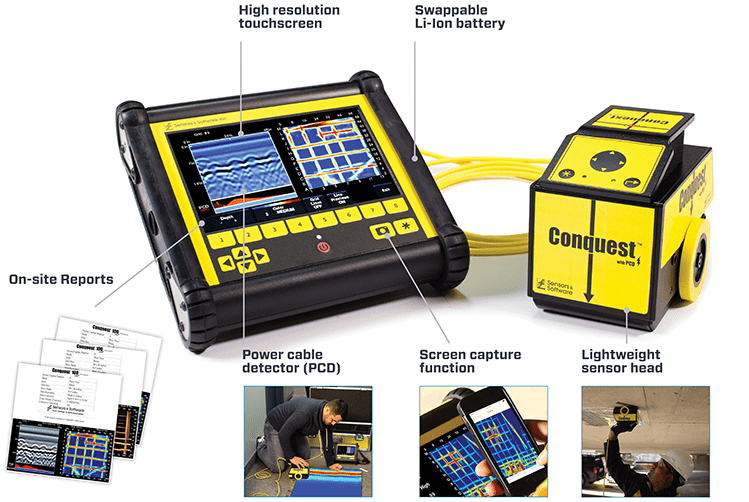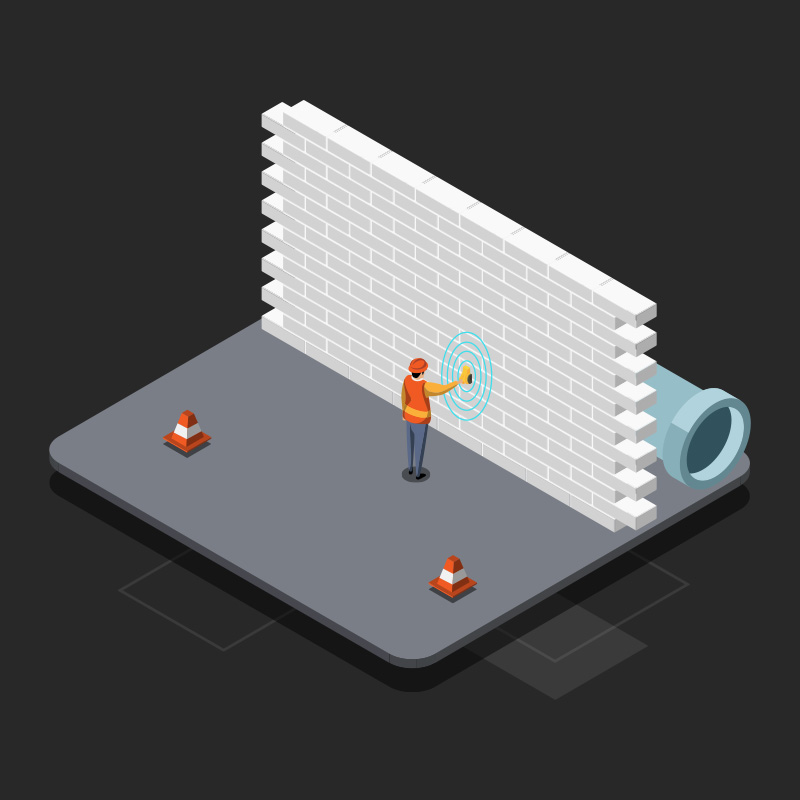Advanced Concrete Scanning Techniques: Ensuring Architectural Stability
Advanced Concrete Scanning Techniques: Ensuring Architectural Stability
Blog Article
Reveal the Transformative Power of Concrete Scanning in Maximizing Effectiveness and Security
Concrete scanning has actually arised as a crucial tool in the building market, using unmatched advantages in enhancing project efficiency and ensuring safety criteria. The transformative power of concrete scanning lies in its ability to provide real-time data and detailed insights, changing just how jobs are planned and performed.
Significance of Concrete Scanning
Making certain the architectural stability and security of construction projects begins with the crucial action of carrying out extensive concrete scanning. Concrete scanning is a non-destructive approach made use of to discover and map subsurface elements within concrete frameworks. This procedure is necessary in determining potential dangers, such as rebar, post-tension cable televisions, and conduits, that might be concealed within the concrete. By utilizing innovative innovations like ground-penetrating radar (GPR) and electro-magnetic induction, building and construction teams can properly find these components without triggering any kind of damages to the framework.
The importance of concrete scanning can not be overemphasized, as it plays a vital function in protecting against accidents, lessening project delays, and making sure the long-term toughness of the building and construction. By identifying prospective threats before the building phase starts, contractors can carry out ideal precaution and make notified choices regarding the design and execution of the job. In addition, concrete scanning helps in enhancing job timelines and spending plan by staying clear of unexpected expenses and delays that might develop as a result of unforeseen blockages within the concrete. Eventually, purchasing thorough concrete scanning is a proactive method that boosts both efficiency and safety in building tasks.
Just How Concrete Scanning Works
Concrete scanning operates as a critical device in building and construction tasks by employing innovative modern technologies to find and map subsurface aspects without triggering structural damages. Ground Permeating Radar (GPR) and Electromagnetic Induction (EMI) are two primary methods made use of in concrete scanning. GPR works by sending out high-frequency radar pulses into the surface, which jump back when they come across subsurface objects or gaps. The time considered the signal to return suggests the depth and area of the items. EMI, on the various other hand, utilizes magnetic fields to recognize variations in product structures, such as identifying rebar or channels within concrete structures.
During the scanning process, the data collected is examined in real-time, enabling immediate identification of prospective dangers or barriers beneath the surface. By employing these advanced modern technologies, concrete scanning considerably minimizes the danger of costly problems and injuries on construction sites.
Benefits of Concrete Scanning
Utilizing advanced scanning technologies in building jobs provides a wide range of advantages, enhancing both effectiveness and safety and security on-site. Among the key advantages of concrete scanning is the capability to discover and situate embedded items such as rebar, post-tension cable televisions, and channels accurately. By identifying these elements prior to boring or cutting into concrete structures, the risk of accidental strikes is significantly lowered, stopping prospective injuries to workers and damage to the framework itself. Concrete scanning aids in planning and creating more properly, as it offers precise info about the area and deepness of structural elements.

Case Studies: Concrete Scanning Success

In another case, a building firm utilized 3D concrete scanning to evaluate the condition of maturing concrete frameworks in a historical structure. The comprehensive scans supplied valuable insights right into the level of deterioration and helped prioritize maintenance initiatives effectively. By proactively dealing with areas of problem recognized through scanning, the firm had the ability to prolong the life expectancy of the framework and make certain occupant safety and security.
These case research studies highlight the transformative power of concrete scanning in improving effectiveness, precision, and safety and security in construction projects.
Implementing Concrete Scanning in Projects
Implementing sophisticated scanning innovations during building and construction tasks has actually come to be significantly essential for enhancing precision and safety. By integrating concrete scanning into task preparation and implementation, construction teams can identify potential hazards, such as rebar or post-tension cables, concealed within concrete frameworks. This aggressive method lessens the risk of accidents, hold-ups, and pricey rework, eventually resulting in extra efficient from this source project timelines and spending plans.
To carry out concrete scanning effectively, job managers need to collaborate very closely with knowledgeable scanning experts to identify one of the most ideal scanning methods for the certain project needs. Engaging scanning specialists from the beginning of a project makes it possible for the team to develop detailed scanning plans that resolve crucial areas of problem and guarantee extensive data collection.
Additionally, incorporating concrete scanning into routine project process can streamline decision-making procedures, as real-time check data provides prompt insights into the problem of concrete structures - Concrete Scanning. This data-driven technique assists in informed problem-solving and allows groups to make modifications without delay, cultivating a culture of effectiveness and safety and security throughout the project lifecycle

Verdict
Finally, concrete scanning plays a critical role in enhancing effectiveness and safety and security in building tasks. By utilizing sophisticated modern technology to map and discover out underlying frameworks within concrete, this process assists to stop pricey mistakes, guarantee structural stability, and minimize risks on site. With the ability to discover hidden elements and supply exact information, concrete scanning shows to be a useful device for optimizing project outcomes and maximizing overall success.
Concrete scanning is a non-destructive method used to find and map subsurface components within concrete frameworks. In addition, concrete scanning assists in enhancing job timelines and budget plan by staying clear of unforeseen prices and hold-ups that might develop due to unanticipated blockages read this post here within the concrete. One remarkable instance research study includes a large-scale renovation job where concrete scanning played a critical duty in making sure project success.In another instance, a building and construction business used 3D concrete scanning to evaluate the condition of maturing concrete structures in a historical structure. By integrating concrete scanning into task preparation and execution, construction groups can determine prospective dangers, such as rebar or post-tension cables, concealed within concrete structures.
Report this page